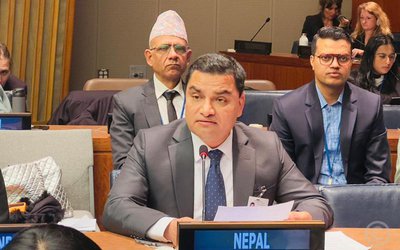In this column we have often brought up the topic of catastrophic illnesses ( heart attacks, traumatic injuries, chemotherapy and radiation for cancer etc), and how these illnesses may financially devastate a Nepali family. It was therefore welcome news to find out that for some years now in certain states in South India, the Arogya Shree scheme has been working to help families financially deal with these severe illnesses.
It is no surprise that in matters relating to health, South India is exemplary. In Andrha Pradesh and Karnataka the Arogya Shree scheme has been targeting impoverished people ( what these states term, BPL people, that is people below the poverty line) to provide them with quality medical care when dealing with catastrophic illnesses. This is a public- private partnership scheme which clearly delineates the different diseases and traumatic injuries it will help with. Package rates are offered for different procedures. For example there is a set fee that the government insurance will pay for common cardiovascular procedures such asangioplasty and stent placement to pacemaker implantation to coronary artery bypass graft surgery (CABG). There is also follow up that is included in this scheme. The scheme in general provides two lakhs for each family per year plus an additional sum of Rs 50,000 on recommendation of a technical committee set up by the scheme.
In Nepal as things stand you have to be financially well- off, or politically well- connected to be able to pay up when your family has to deal with a catastrophic illness. Otherwise it is the old story about borrowing money, selling off your land, cattle or jewelry(if you possess them) to pay for the hospital fees.
In countries like India ( and now Nepal too), it is ironical that many of the latest expertise and equipment are available to deal with many life- threatening illnesses. Witness the growth of the well- appointed hospitals in this part of the world. In fact medical tourism is flourishing in many parts of India. But despite the availability of these personnel and modern equipment, there is no insurance coverage for the average person to avail themselves of these services without resorting to desperate measures. Other states in India are also trying to simulate this successful scheme from Andrha Pradesh and Karnataka to deal with burgeoning health costs in the face of a catastrophic illness. In the news recently we have heard that Nepal is also trying to have universal health insurance. So along these lines theNepali government, industrialists, and perhaps even thedonor agencies need to seriously start thinking about how to build a Nepali Arogya Shree.

Buddha Basnyat MD
Buddha Basnyat, MD, MSc, FACP, FRCP, Director of the Oxford University Clinical Research Unit-Patan Academy of Health Sciences, Kathmandu.
- Altitude Sickness
- Feb 20, 2018
- Post-earthquake Nepal: The Way Forward
- Dec 13, 2015
- The Annapurna Sanctuary
- Nov 29, 2015
- Diarrhea at the Summit
- Nov 08, 2015
- Altitude Sickness ( AMS, HAPE, HACE)
- Oct 15, 2015














